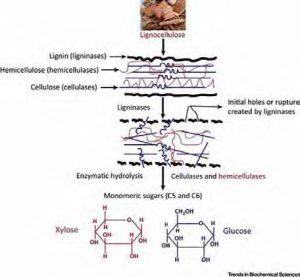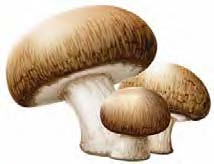By: Mike McNally
How often have you heard beekeepers talk about why their bees are all over compost piles, manure piles or sawdust piles. The answer is always the same, who knows? This typically occurs when there are minimal plants in bloom. The answer is quite simple the bees are after sugar. I know!!! How did the sugar get there? To answer that question we need to go back to high school Biology class. Remember photosynthesis? Green plants with chlorophyll take in carbon dioxide and water, add a little sunshine and out comes oxygen and complex carbon compounds. Sugars are some of the complex carbon compounds.
All of nature’s chemical processes require energy. Most of that energy comes from sugars tied up in organic compounds. Microorganisms such as bacteria and fungi breaks down large organic molecules into smaller ones and in the process take their sugars to drive their own chemical processes. Remember only plants can make their own sugars, all other organisms need to get it from plants one way or another.
Fungi, in particular mushrooms are the world’s big time disassemblers. Without fungi we would have nothing but dead plants and trees cluttering our landscape. Fungi breaks down mostly cellulose and lignin from plants and trees but they are also able to breakdown long chain carbon and hydrocarbon molecules. In short they are able to break down pesticides and petrochemicals. Yup, you read it right. Some mushrooms are able to detoxify pesticides and break down petrochemicals in oil spills. For those of you that would like to read more on this subject I would recommend the book Mycelium Running by Paul Stamets.

Now back to the manure pile. When any organic waste sits, be it manure, wood, straw or whatever it quickly becomes populated with microorganisms and the breakdown process begins. Mushrooms put out spores (seed) and when they land on a suitable organic piles they start to grow strands of hyphae which in turn grows into mycelium, the primary body of the mushroom organism. It is this portion that is out of sight and underground. There may be hundreds of miles of mycelial strands in a compost pile. At this point the mushrooms produce enzymes that breaks down the organic matter into sugars, peptides, polypeptides, alcohols and other organic compounds. Each mushroom species produce their own cocktail of enzymes which is unique and favors that particular mushroom. During times of rapid metabolism mushrooms excrete moisture droplets called guttations that contain organic compounds listed above.
One very important acid that is contained in the guttations is p-coumaric acid. It is responsible for turning on the honey bee’s immune system via the cytochrome P-450 pathway and very recently it was found to suppress ovarian enlargement and development in worker bees and ls usually found in bee bread. Thus the development of queen bees depends on being fed royal jelly with no p-coumaric acid in it. Who knew??? P-coumaric acid is ubiquitous in nature and found on many flowers as well. 1, 2.
Anyway, honey bees feed on these guttations and get fungal sugars and important phytonutrients like p-coumaric acid and others. Always when I give talks on the relationship of honey bees and fungi and why we find them feeding on compost and manure piles there is always a curmudgeon in the back that yells out, “what does the honey taste like?” Being a curmudgeon myself I yell back, “it tastes like crap”. Not really but we are both pleased with our quips.








